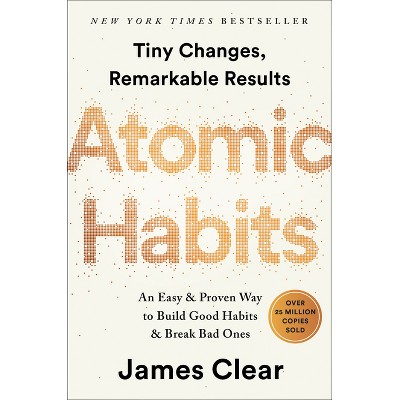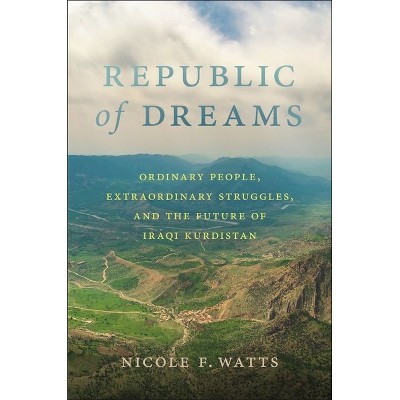Sponsored

Gender and the Race for Space - (Anthem Intercultural Transfer Studies) by Erinn McComb (Hardcover)
In Stock
Sponsored
About this item
Highlights
- This book chronicles the history of early spaceflight and asks how American gender culture shaped the public image of the American astronaut and spaceflight technology during some of the tensest years of the Cold War era.
- About the Author: Erinn McComb, PhD, is Associate Professor of History at Del Mar College in Corpus Christi, Texas.
- 304 Pages
- History, Military
- Series Name: Anthem Intercultural Transfer Studies
Description
About the Book
This book argues that the American astronaut image was informed by early Cold War ideals of masculinity that helped mold a distinctly American (anti-communist) masculinity, which appeared--on the surface anyway--to resolve not only an American "crisis of masculinity" but helped win the Cold War on an ideological and popular level.
Book Synopsis
This book chronicles the history of early spaceflight and asks how American gender culture shaped the public image of the American astronaut and spaceflight technology during some of the tensest years of the Cold War era. While historians have pieced together the story of American women's fight for spaceflight, this work adds to the narrative by analyzing masculinity and the astronaut image by focusing on how that image came to terms with a perceived Cold War masculinity crisis. The astronaut image was informed by Cold War ideals of fixed gender binaries, specifically, the masculine ideal of control over technology. The American astronaut performed masculinity in space through his control of the space capsule. This emphasis on astronaut control helped mold a distinctly American (anti-communist) masculinity that appeared--on the surface anyway--to resolve not only an American masculinity crisis but helped win the Cold War on an ideological and popular level.
The book begins by establishing a post-World War II masculinity crisis dialogue. For instance, Americans saw communism, conformity, feminism, homosexuality, automation, minority rights, and the dreaded "organization man" as threats to masculinity. Drawing upon this scholarship, this book explores how this dialogue played out within the spaceflight public discourse from 1957 through 1983--a time when cosmic conquest was integral to America's success in maintaining domestic security and morale while securing victory in the international conflict with the Soviets. Using primary sources from the public record, such as newspapers, magazines, media, the National Aeronautics and Space Administration (NASA), Congress, speeches, the astronaut's stories, and intellectual works, the book states that the American public discourse constructed the astronaut as an archetype of American masculinity through the spaceman's ability to control spaceflight technology. The assumption that the astronaut could "fly" the capsule insinuated an American masculinity of individualism apart from Soviet conformity. The American accentuation of pilot control continued from Project Mercury through Project Apollo, but it often clashed with computer control, space accidents, the scientist-astronaut, and mission control. These conflicts led the astronaut image to be refashioned into that of Michael Kimmel's "democratic manhood"--a masculinity that encompassed the self-made man and the team player. Democratic manhood still centered on masculine control, either men as individuals or men working in teams. The moon landing symbolized that through astronaut control of technology, Americans had conquered space. Women and people of color were left out of this dialogue of technological control but played important roles as passive actors with technology. Control meant a white masculine performance with spaceflight technology. Running parallel to this need to create a fixed masculinity, women fought for their chance for spaceflight, while African Americans and Hispanics were largely feminized as non-technological users. With the 1969 moon conquest, the domestication of spaceflight quickly followed with the space shuttle taxis that--for a short period anyway--demonstrated the safety of spaceflight. The book concludes that within this domesticated spaceflight framework, diverse women at NASA--both astronauts and staff--challenged fixed gender roles by proving themselves courageous, individual professionals in what by 1986 became the dangerous business of spaceflight.
Review Quotes
"McComb explores the construction of a masculine U.S. astronaut image based on rugged individuali-ty, self-determination and control as a Cold War counter to Soviet collectivism, even as NASA straddled conservative and progressive understandings of gender roles by allowing women to hold traditionally male jobs as engineers, computer programmers and technicians." -- Alan D. Meyer, author of Week-end Pilots: Technology, Masculinity, and Private Aviation in Postwar America (2015).
"McComb sheds new light on the storied space race and its aftermath through a sharp focus on gender and astronauts. Her historical scholarship traces in vivid detail how a culture of masculinity was estab-lished within U.S. aerospace but challenged by daring women including Jerrie Cobb, Sally Ride and Ei-leen Collins." -- Jordan Bimm, University of Chicago, US
"McComb offers a fresh perspective on how women were publicly accepted as members of the astro-naut corps. Accordingly, technological changes that shifted spaceflight from being viewed as a dan-gerous endeavor to a routine one markedly changed perceptions of who could participate in space-flight." -- Monique Laney, Auburn University, USA
"This exhaustively researched book, prepared by an experienced space studies scholar, is likely to be received enthusiastically by historians of technology, women's and gender studies scholars, and space history enthusiasts." --Matthew H. Hersch, JD, PhD, Associate Professor of the History of Science, Harvard University, Cambridge, MA, USA
"McComb explores the construction of a masculine U.S. astronaut image based on rugged individuali-ty, self-determination and control as a Cold War counter to Soviet collectivism, even as NASA straddled conservative and progressive understandings of gender roles by allowing women to hold traditionally male jobs as engineers, computer programmers and technicians." - Alan D. Meyer, author of Week-end Pilots: Technology, Masculinity, and Private Aviation in Postwar America (2015).
"McComb sheds new light on the storied space race and its aftermath through a sharp focus on gender and astronauts. Her historical scholarship traces in vivid detail how a culture of masculinity was estab-lished within U.S. aerospace but challenged by daring women including Jerrie Cobb, Sally Ride and Ei-leen Collins." - Jordan Bimm, University of Chicago, US
"McComb offers a fresh perspective on how women were publicly accepted as members of the astro-naut corps. Accordingly, technological changes that shifted spaceflight from being viewed as a dan-gerous endeavor to a routine one markedly changed perceptions of who could participate in space-flight." - Monique Laney, Auburn University, USA
"This exhaustively researched book, prepared by an experienced space studies scholar, is likely to be received enthusiastically by historians of technology, women's and gender studies scholars, and space history enthusiasts." -Matthew H. Hersch, JD, PhD, Associate Professor of the History of Science, Harvard University, Cambridge, MA, USA
About the Author
Erinn McComb, PhD, is Associate Professor of History at Del Mar College in Corpus Christi, Texas. She researches the intersection of gender with foreign policy, science, and technology.
Shipping details
Return details
Frequently bought together

Trending Non-Fiction
















